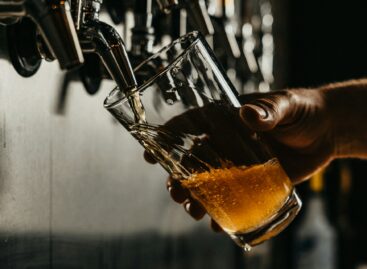Magazine: The 50 shades of colourless

Annamária Benke
category brand manager
Roust Hungary
We learned from Annamaria Benke, Roust Hungary’s category brand manager that they are the market leader in the vodka category. In the mainstream segment, the company is present with Royal vodka and Zubrówka Biala – the former is the No.1 spirit in Hungary. Their premium products are Bols, Russian Standard and Zubrówka Bison Grass, while Roust Hungary’s super-premium vodkas are Kauffmann and Russian Standard Imperia.

Sára Palcsó
marketing director
Zwack
Sára Palcsó, marketing director of Zwack told that they make Kalinka vodka, which is characterised by a good price-value ratio. Kalinka is the second biggest brand in the VFM category. Zwack’s premium category player is Smirnoff vodka, plus they have the up-and-coming Dutch brand Ketel One. In the super-premium category, the company is present with Ciroc: a French vodka distilled from grapes.
When it comes to buying vodka, below a certain level we can talk about price loyalty, and above a certain level, there is brand loyalty. Csaba Mosonyi, marketing director of Pernod Ricard told: their biggest brand is Absolut vodka, which is one of the strongest premium brands in the market. Absolut Blue is the most popular version, but flavoured variants also exist. In the standard price segment, the company markets the Polish Wyborowa vodka.

Bence Szanyó
junior brand manager
Heinemann
Bence Szanyó, junior brand manager of Heinemann informed that their strongest vodka brand is the Russian vodka Beluga. It just took two years for Beluga to become the second biggest brand in the super-premium segment. The company competes in the mainstream category with the Polish vodka Sobieski.
Ms Palcsó revealed that shoppers can now choose from many different vodka types. However, the differences easily disappear if the vodka is used in a cocktail – this is the point where marketing and brand equity come in the picture. Her view is that the new innovation direction is exciting flavours such as cucumber and tropical fruits. Ms Benke stressed that innovation is very important for the company: in 2016 they rolled out the elder and lemongrass versions of Royal vodka, in 2017 Royal liqueurs came out, sour cherry and blackcurrant, which were followed by hazelnut and plum in 2018. Mr Mosonyi opines that consumers don’t really feel the difference in vodka tastes, but they know that quality vodkas taste better. The latest trend is coloured vodkas, which haven’t really entered Hungary yet, e.g.
Mr Szanyó reckons that the biggest misconception about vodkas is that they don’t have a taste at all. Each vodka has its own flavour and fragrance, and these can be enjoyed the best in premium products. In the HoReCa segment, the company is present with ‘luxury vodkas’ Beluga and Sobieski, but they are working on adding new products to their portfolio. //
New players on the team
About 10-20 years ago vodka was the favourite spirit of innovators, but the big vodka fever has subsided a little by now. From the last 1-2 years, perhaps Absolut Juice Edition is the innovation that makes the most sense. The manufacturers reacted to the demand for lower alcohol content from young generations with these 35-percent abv drinks, made with apple or strawberry juice. The arrival of 1911’s cold brew coffee vodka was basically inevitable.


//
Related news
The taste of luxury
🎧 Hallgasd a cikket: Lejátszás Szünet Folytatás Leállítás Nyelv: Auto…
Read more >After an exclusive dinner at Unicum House, the beck@grecsó duo will treat their fans to a signed album
🎧 Hallgasd a cikket: Lejátszás Szünet Folytatás Leállítás Nyelv: Auto…
Read more >Treasures of the past are revealed: Zwack and the Hungarian National Archives work together to preserve values
🎧 Hallgasd a cikket: Lejátszás Szünet Folytatás Leállítás Nyelv: Auto…
Read more >Related news
The New Year’s Eve fireworks fair is back: temporary sales will start in department store parking lots at the end of December
🎧 Hallgasd a cikket: Lejátszás Szünet Folytatás Leállítás Nyelv: Auto…
Read more >The first Eastern European non-alcoholic beer turns 50
🎧 Hallgasd a cikket: Lejátszás Szünet Folytatás Leállítás Nyelv: Auto…
Read more >Sausage: pork prices are already going down, but they won’t be cheaper in stores – a significant correction may come in the spring at the earliest
🎧 Hallgasd a cikket: Lejátszás Szünet Folytatás Leállítás Nyelv: Auto…
Read more >






